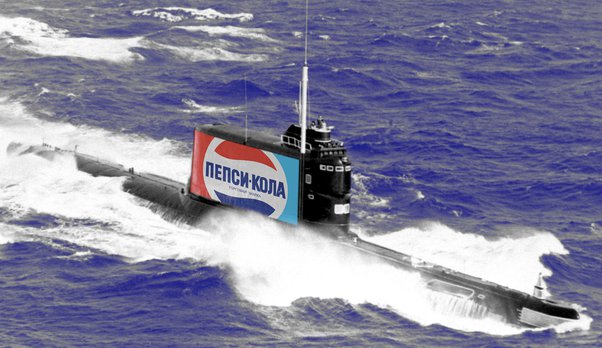On the morning of September 25, 2000, 19-year-old Kevin Hines made his way to the Golden Gate Bridge, San Francisco’s mile-wide landmark.
Kevin wasn’t heading there to sightsee; he had decided to end his life there.
Leading up to that decision, Kevin had been living a life of sadness and deep despair, with his mental health rapidly declining in the months prior.


He’d been diagnosed with bipolar disorder and had recently begun hearing voices, and they were rarely kind to him.
On that fateful day, they told him to end his life.
Unable to see another way out of his suffering, Kevin heeded the voice’s command and jumped hundreds of feet from the Golden Gate Bridge to the icy water beneath it.
The jump was almost certainly fatal. The water would do little to break his fall. In fact, it was the same as if he’d landed on concrete at the speed he hurtled toward it.
There was a 99% chance of death from enduring such a fall, but miraculously, Kevin survived.
Not only did he survive—with the help of a sea lion, no less—but he also went on to become a mental health advocate.
This is Kevin Hines’ miraculous story of surviving the unsurvivable and finding purpose in the aftermath.
Leading Up To The Leap
Kevin was born on August 30, 1981 in San Francisco.
He was adopted by the Hines family when he was nine months old since his birth parents struggled with addiction and found themselves unable to get out of poverty.
Kevin’s tumultuous early life undoubtedly affected him despite finally being given stability and comfort. Then, his twin brother tragically passed away due to bronchitis, causing more trauma and heartache for young Kevin.
The young boy seemingly couldn’t catch a break when aged ten, he began suffering epileptic seizures. Sadness would befall Kevin once again when his beloved drama teacher ended their own life.
When Kevin was 16, it was agreed he would stop taking Tegretol, the anticonvulsant medication used to suppress his seizures. Around this time, the teenager began experiencing symptoms of bipolar disorder, of which a diagnosis would be made the following year.
Still, the symptoms would only get worse as the years passed. By September 25, 2000, the voices in Kevin’s head had become all-consuming.
His struggles felt insurmountable, and he tried to turn to loved ones for support, though he never felt able to actually ask for help or tell them just how dark his thoughts were becoming.
On that fateful September morning, Kevin woke his father up to tell him he loved him. “Are you okay?” the concerned parent asked since this was out of the ordinary behavior for Kevin.
Kevin assured his dad he was fine and then let the concerned parent go back to sleep. Kevin had wanted desperately to say how depressed he was feeling, but the words stuck in his throat.
So, as planned, he jumped on a bus to the Golden Gate Bridge. On the way there, Kevin looked for someone or something to stop his plan from being carried out.
He was clearly in distress—he was crying and appeared visibly lost and upset—but nobody intervened.
It was the same when he stood on the edge of the bridge, readying himself to jump. He was in distress, but passersby simply walked past and said nothing.
Then, a woman noticed him and headed toward Kevin as he stood on the edge of the bridge.
She held out her hand to him, and when he looked down, Kevin saw she was holding a camera. “Can you take my picture?” the tourist asked. Despite being visibly upset, Kevin obliged, and the woman went on her way.
Without any signs to stop or human intervention, Kevin decided to listen to the voices in his head and take the leap.
Just after he did, regret set in. He knew he’d made a mistake and realized he didn’t truly want to leave this world.
But it was too late. He was hurtling toward the freezing water at over 70 miles per hour, and despite the odds against him, he prayed he would survive the impact.
The four seconds it took him to fall 240 feet felt like a lifetime and a split second simultaneously.
In a quick-thinking bid to do as much damage control as possible, Kevin moved his body mid-air to land feet-first.
He slammed into the water with great force, shattering three vertebrae, breaking his ankle, and suffered multiple internal injuries.
Kevin sank into the deep, dark waters, something he found much more terrifying than the descent itself.

He couldn’t see, he couldn’t breathe, and the surface of the water was further away than he could manage. He was either going to drown or be eaten by sharks, he thought.
He did his best to swim upwards, though his injuries made that difficult. Then, a miracle happened: a sea lion appeared out of nowhere and began nudging Kevin to the surface.
When he was able to gasp for air, the heroic sea lion didn’t stop there. He remained on the scene and circled the injured teenager, propping him above water until the Coast Guard arrived.
This wasn’t the end of Kevin’s story. In fact, it was just the beginning.
Pain Becomes Purpose For Kevin Hines
Kevin’s survival from his almost fatal leap off the Golden Gate Bridge would be a turning point in his life. Not straight away, though: he had to endure the recovery, which was yet another difficult period for him.
Not only did he have to go through surgery and physical therapy—he had a metal plate inserted to replace his shattered vertebrae—but his mental health also suffered further.
Despite realizing he didn’t want to die, Kevin’s demons followed him to the hospital. Soon after the ordeal, he began suffering hallucinations and was eventually moved to a psychiatric ward to recover.
It became clear to Kevin that he was tormented and suffering from mental health problems.
There was still a long way to go to solve this, but the first hurdle was already cleared: Kevin knew he didn’t want to die and needed to address his depression. So, amid the physical healing, he began steps to heal mentally, too.
Pushing through waves of helplessness, sadness, and mental anguish, Kevin sought out the help he needed.
He underwent intensive therapy, found the right medication for him, and learned to speak up when he felt his mental health declining.
His family, now all too aware of how much Kevin had been suffering, were there to lean on for support. Recovery was a long road, but Kevin made it to the end.
As part of the journey, he realized he wanted to help others who felt like he had.
He knew that millions of people out there felt helpless, isolated, and like a burden to others, and he wanted to make it his mission to save them before it was too late. He’d survived an almost fatal jump and wanted to make sure it wasn’t in vain.
The attempt on his own life had made Kevin realize he wanted to live, and it also made him ponder the question: if he’d regretted the attempt on his life after jumping, how many other people had felt the pangs of regret, too?
It turns out many did. Kevin’s story inspired many others who attempted the same thing to tell their own stories, and the majority agreed that they felt great regret after carrying out the act.
Naturally, the media were intrigued by Kevin’s story, and he used this to his advantage in becoming a mental health advocate and speaking up about his own struggles.

This led to him becoming a highly sought-after speaker, where he recounts his experience to the audience and uses this to shatter any misconceptions.
He is now a published author, content creator, and sometimes actor. He also produced a documentary on his ordeal called “The Ripple Effect.”
Not only that, but Kevin also lobbied for better safety restrictions on the Golden Gate Bridge. It had been a place where many people had died at their own hands—around 2000 people have jumped to their deaths as of writing.
Kevin wanted to change this, and in January 2024, a deterrent system was installed. It’s a large net that covers around 95% of the 1.7-mile bridge, disabling possible jumpers.
When asked what Kevin would say to someone dealing with thoughts about ending it all, he said: “Be kind to yourself, compassionate and forgiving of yourself. Su*cide is not the answer to your problem. It is the problem.”
Sources
https://www.healthcentral.com/condition/depression/kevin-hines-survived-golden-gate-bridge
https://rudermanfoundation.org/podcasts/kevin-hines-surviving-thriving/
https://www.dvidshub.net/news/454753/desperation-resilience-kevin-hines-story













Leave a comment